BICM-ID with Physical Layer Network Coding in TWR Free Space Optical Communication Links †
Abstract
:1. Introduction
2. System Description
2.1. PNC Model
2.2. Channel Model
2.2.1. Atmospheric Turbulence-Induced Fading
2.2.2. Pointing Errors
2.2.3. Atmospheric Loss
2.3. System Model
2.3.1. Transmitter
2.3.2. Relay
2.3.3. Receiver
3. ExIT Charts Analysis
Setup ExIT Function
4. Simulation Results
4.1. Iterative Process
4.2. Convergence Behaviour
5. Conclusions
Acknowledgments
Conflicts of Interest
References
- Ahlswede, R.; Cai, N.; Li, S.; Yeung, R. Network information flow. IEEE Trans. Inf. Theory 2000, 46, 1204–1216. [Google Scholar] [CrossRef]
- Zhang, S.; Liew, S.C.; Lam, P.P. Hot topic: physical layer network coding. In Proceedings of the 12th Annual International Conference on Mobile Computing and Networking (MobiCom), Los Angeles, CA, USA, 24–29 September 2006; pp. 358–365. [Google Scholar]
- Andrews, L.C.; Phillips, R.L. Laser Beam Propagation through Random Media, 2nd ed.; SPIE: Bellingham, WA, USA, 2005; Volume PM152. [Google Scholar]
- Ansari, I.S.; Abdallah, M.M.; Alouini, M.S.; Qaraqe, K.A. Outage performance analysis of underlay cognitive RF and FSO wireless channels. In Proceedings of the 3rd International Workshop in Optical Wireless Communications (IWOW), Madeira Island, Portugal, 17 September 2014; pp. 6–10. [Google Scholar]
- Sandalidis, H.G. Coded free-space optical links over strong turbulence and misalignment fading channels. IEEE Trans. Commun. 2011, 59, 669–674. [Google Scholar] [CrossRef]
- Lee, I.E.; Ghassemlooy, Z.; Ng, W.P.; Uysal, M. Performance analysis of free space optical links over turbulence and misalignment induced fading channels. In Proceedings of the 8th International Symposium on Communication Systems, Networks & Digital Signal Processing (CSNDSP), Poznan, Poland, 18–20 July 2012; pp. 1–6. [Google Scholar]
- Awan, M.S.; Brandl, P.; Leitgeb, E.; Nadeem, F.; Csugai-Horvath, L.; Nebuloni, R. Transmission of high data rate optical signals in fog and snow conditions. In Proceedings of the 1st International Conference on Wireless Communication, Vehicular Technology, Information Theory and Aerospace & Electronic Systems Technology, Aalborg, Denmark, 17–20 May 2009; pp. 702–706. [Google Scholar]
- Hranilovic, S. Trends and progress in optical wireless communications. In Proceedings of the Optical Fiber Communications Conference and Exhibition (OFC), Los Angeles, CA, USA, 19–23 March 2017; pp. 1–3. [Google Scholar]
- Chatzidiamantis, N.D.; Michalopoulos, D.S.; Kriezis, E.E.; Karagiannidis, G.K.; Schober, R. Relay selection protocols for relay-assisted free-space optical systems. IEEE/OSA J. Opt. Commun. Netw. 2013, 5, 92–103. [Google Scholar] [CrossRef]
- Karimi, M.; Nasiri-Kenari, M. Free space optical communications via optical amplify-and-forward relaying. J. Lightwave Technol. 2011, 29, 242–248. [Google Scholar] [CrossRef]
- Bhatnagar, M.R. Average BER analysis of differential modulation in DF cooperative communication system over gamma-gamma fading FSO links. IEEE Commun. Lett. 2012, 16, 1228–1231. [Google Scholar] [CrossRef]
- Zhou, X.; Zhang, D.; Yang, Y.; Obaidat, M.S. Network coded multiple source cooperation aided relaying for free space optical transmission. Int. J. Commun. Syst. 2012, 25, 1465–1478. [Google Scholar] [CrossRef]
- Zlatanov, N.; Hranilovic, D.; Evans, J.S. Buffer-Aided Relaying Improves Throughput of Full-Duplex Relay Networks With Fixed-Rate Transmissions. IEEE Commun. Lett. 2016, 20, 2446–2449. [Google Scholar] [CrossRef]
- Abu-Almaalie, Z.; Ghassemlooy, Z.; Le-Minh, H.; Aslam, N. Physical layer network coding with two-way relay free space optical communication link. In Proceedings of the Internet Technologies and Applications (ITA), Wrexham, UK, 8–11 September 2015; pp. 292–297. [Google Scholar]
- Henniger, H.; Epple, B.; Giggenbach, D. Mobil FSO Activities in Europe and Fading Mitigation Approaches. In Proceedings of the 17th International Conference Radioelektronika, Brno, Czech Republic, 24–25 April 2007; pp. 1–6. [Google Scholar]
- Almaalie, Z.A.; Ghassemlooy, Z.; Al-Rubaie, A.A.S.; Lee, I.E.; Le-Minh, H. Forward error correction with physical layer network coding in two-way relay free space optical links. In Proceedings of the 8th Computer Science and Electronic Engineering (CEEC), Colchester, UK, 28–30 September 2016; pp. 1–5. [Google Scholar]
- Kumar, K.; Borah, D.K. Hybrid symbols for parallel optical/RF channels using BICM-ID. Electron. Lett. 2011, 47, 1189–1190. [Google Scholar] [CrossRef]
- Kumar, K.; Borah, D.K. Hybrid FSO/RF symbol mappings: Merging high speed FSO with low speed RF through BICM-ID. In Proceedings of the IEEE in Global Communications Conference (GLOBECOM), Anaheim, CA, USA, 3–7 December 2012; pp. 2941–2946. [Google Scholar]
- Li, X.; Ritcey, J.A. Bit-interleaved coded modulation with iterative decoding. IEEE Commun. Lett. 1997, 1, 169–171. [Google Scholar]
- Brink, S.T. Convergence of iterative decoding. Electron. Lett. 1999, 35, 806–808. [Google Scholar] [CrossRef]
- Farid, A.A.; Hranilovic, S. Outage capacity optimization for free-space optical links with pointing errors. J. Lightwave Technol. 2007, 25, 1702–1710. [Google Scholar] [CrossRef]
- Karp, R.M. Optical Communications, 2nd ed.; John Wiley: New York, NY, USA, 1995. [Google Scholar]
- Zambrana, A.G.; Vázquez, C.C.; Vázquez, B.C. Outage performance of MIMO FSO links over strong turbulence and misalignment fading channels. Opt. Express 2011, 19, 13480–13496. [Google Scholar] [CrossRef] [PubMed]
- Zdravkovic, N.; Petkovic, M.I.; Djordjevic, G.T.; Kansanen, K. Outage analysis of mixed FSO/WiMAX link. IEEE Photonics J. 2016, 8, 1–14. [Google Scholar] [CrossRef]
- Proakis, J.G. Digital Communications, 4th ed.; McGraw Hill: New York, NY, USA, 2001. [Google Scholar]
- Billingsley, P. Probability and Measure, 3rd ed.; John Wiley & Sons: Hoboken, NJ, USA, 1995. [Google Scholar]
- Brink, S.T. Convergence behavior of iteratively decoded parallel concatenated codes. IEEE Trans. Commun. 2001, 49, 1727–1737. [Google Scholar] [CrossRef]
- Tuchler, M.; Hagenauer, J. EXIT charts of irregular codes. In Proceedings of the 36th Annual Conference on Information Sciences and Systems (CISS), Princton, NJ, USA, 21–23 March 2002; pp. 748–753. [Google Scholar]
- Richardson, T.J.; Shokrollahi, M.A.; Urbanke, R.L. Design of capacity-approaching irregular low-density parity-check codes. IEEE Trans. Inf. Theory 2001, 47, 619–637. [Google Scholar] [CrossRef]
- Olmos, J.; Ruiz, S.; Lozano, M.G.; Sacristan, D.M. Link Abstraction Models Based on Mutual Information for LTE Downlink. Available online: https://goo.gl/46Hvm8 (accessed on 19 July 2017).
- Brannstrom, F.; Rasmussen, L.K.; Grant, A.J. Convergence analysis and optimal scheduling for multiple concatenated codes. IEEE Trans. Inf. Theory 2005, 51, 3354–3364. [Google Scholar] [CrossRef]
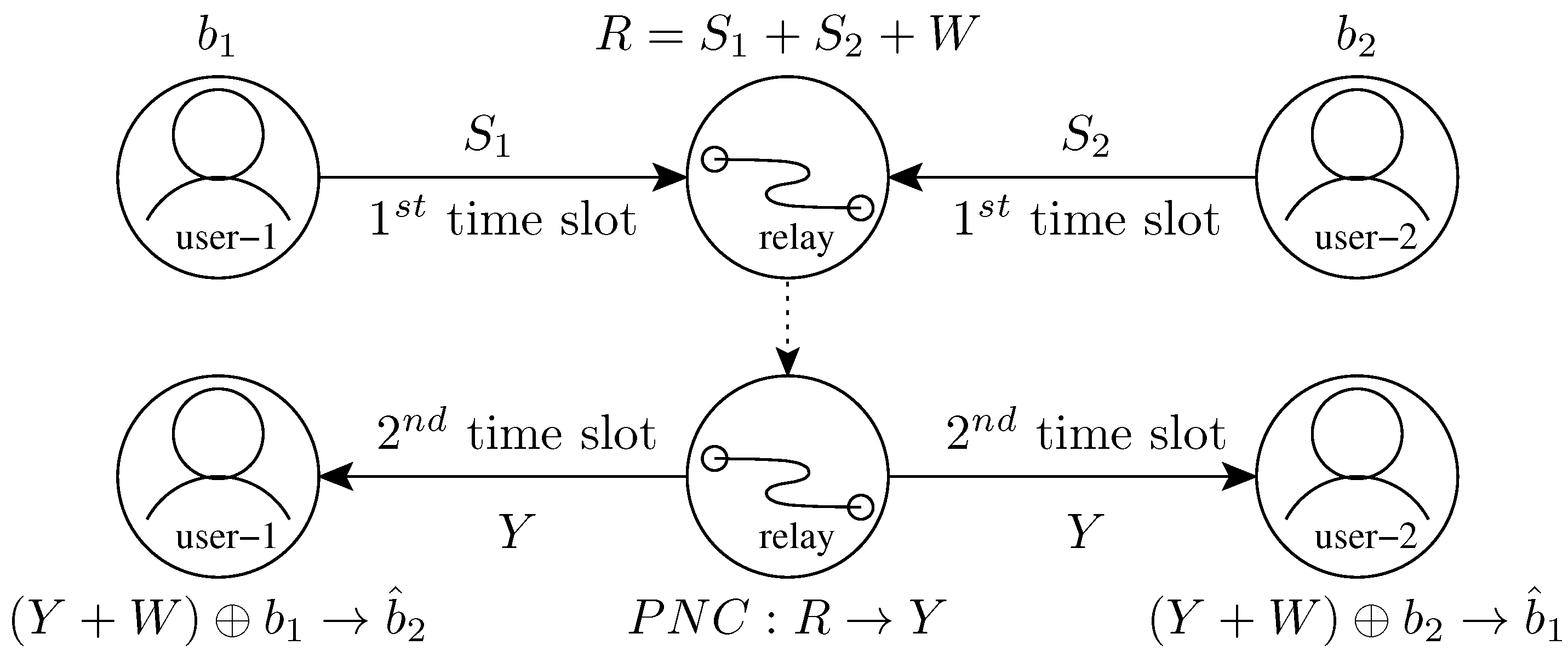
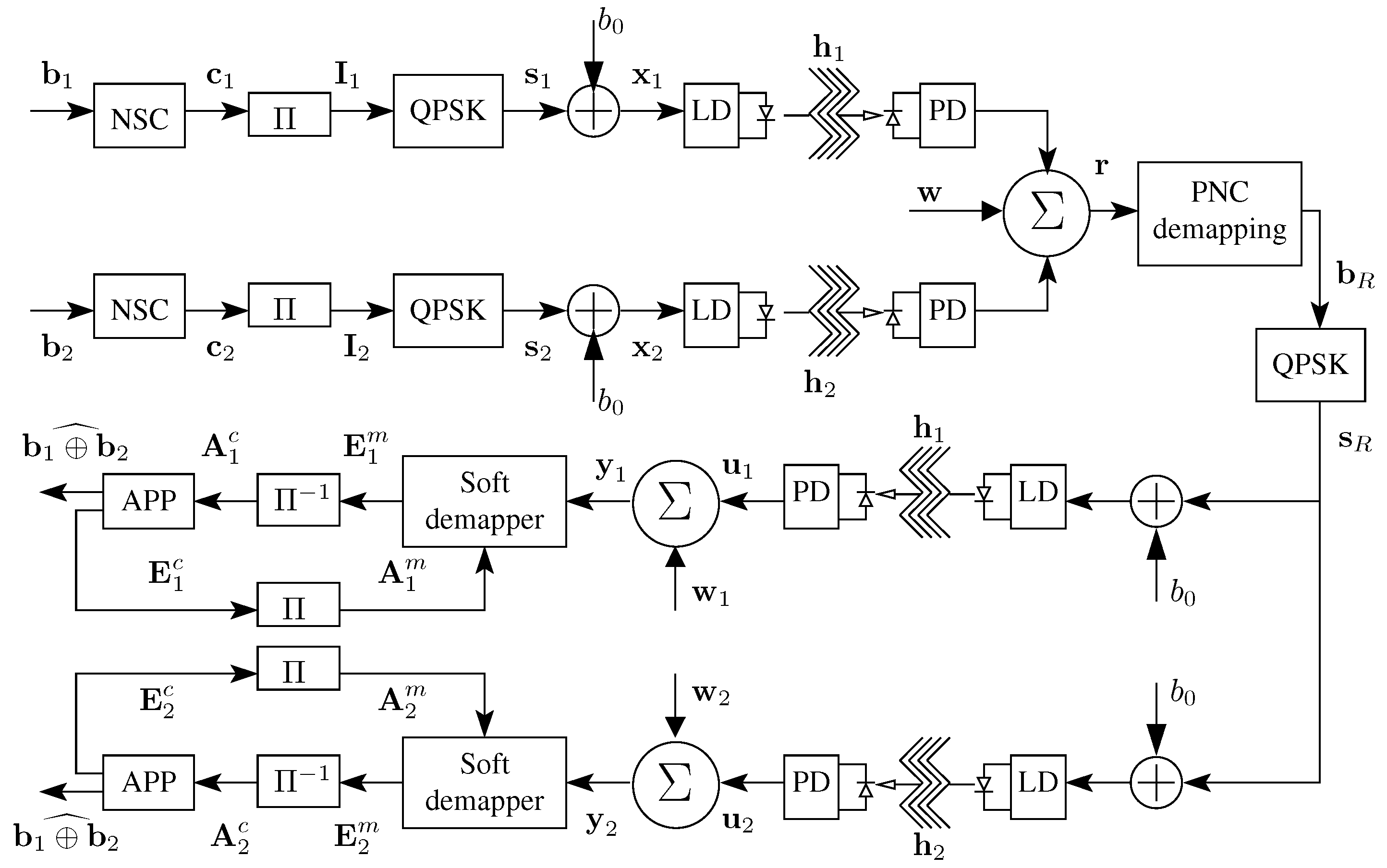
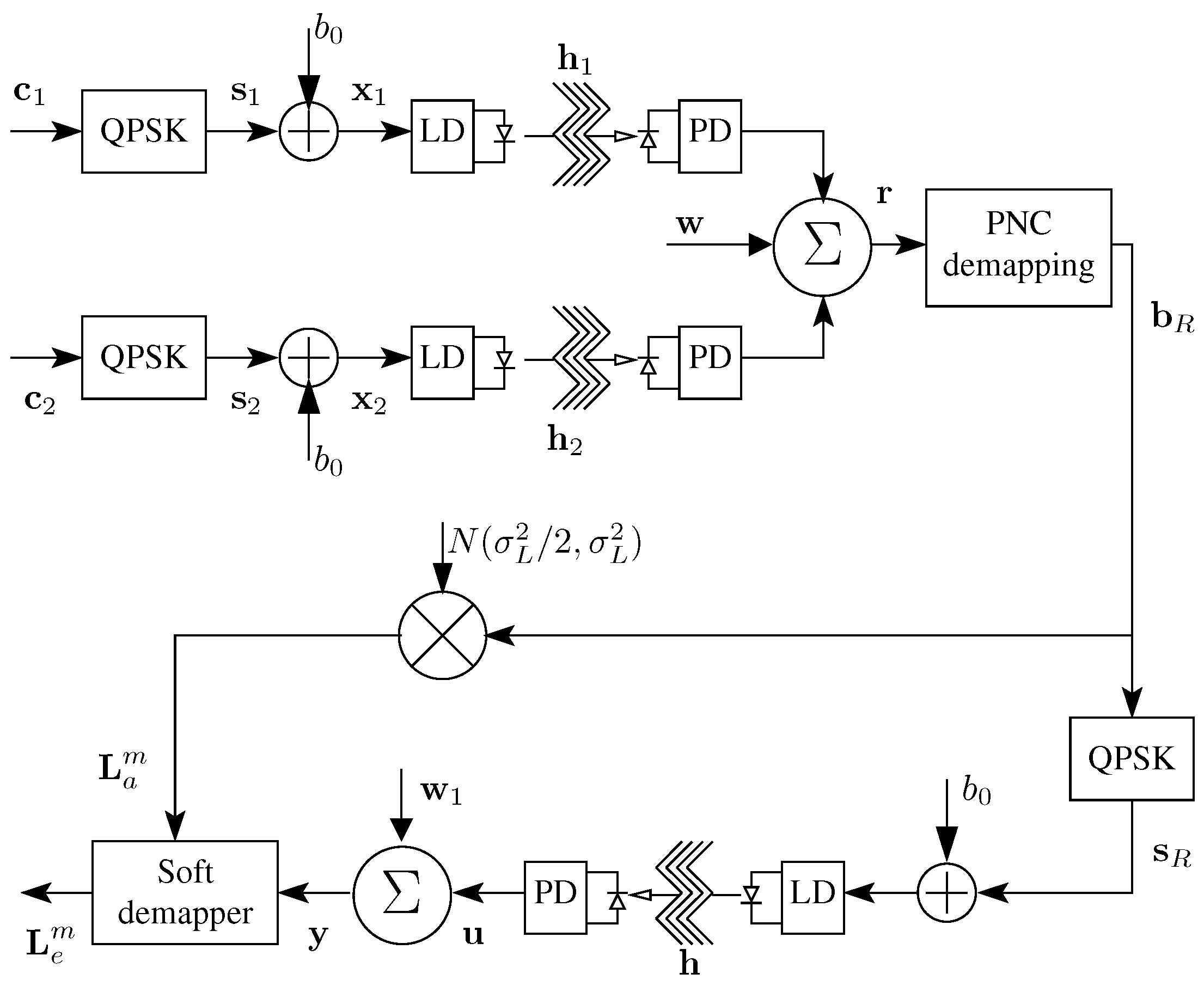
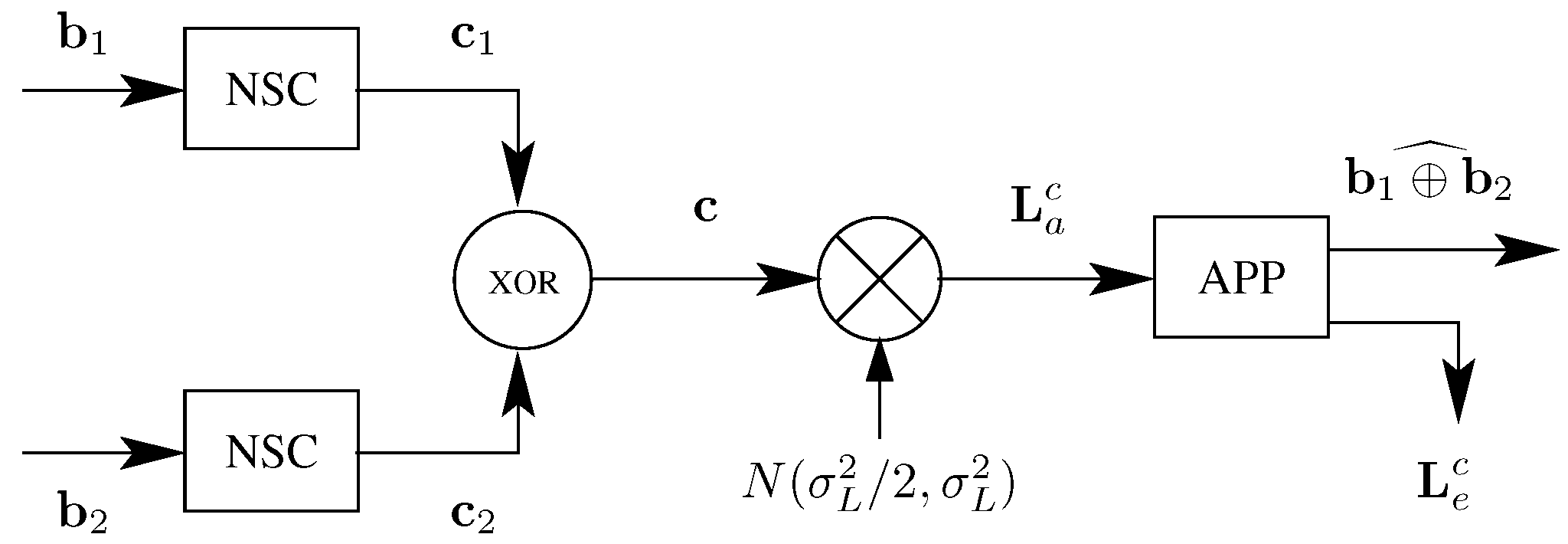
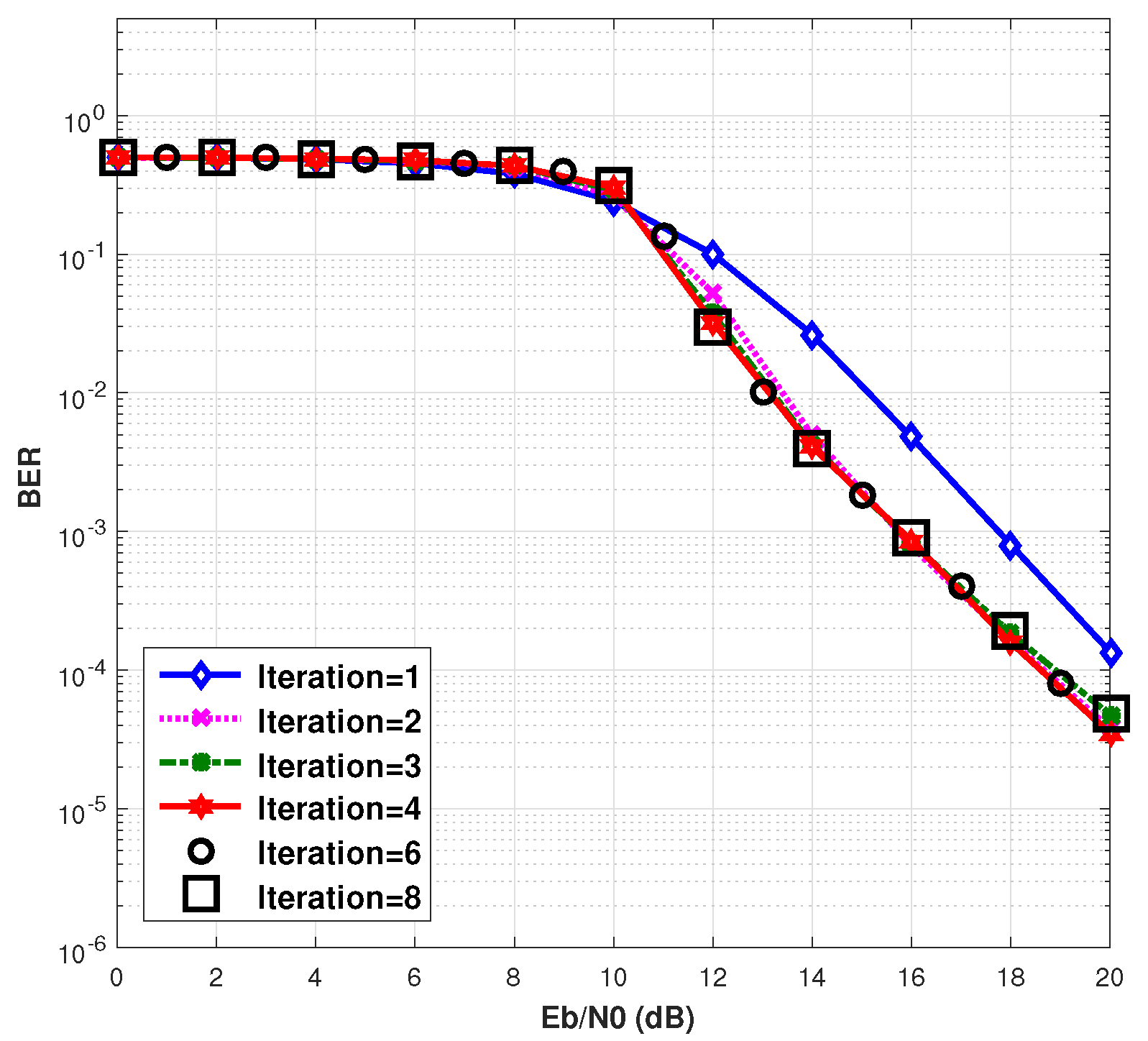

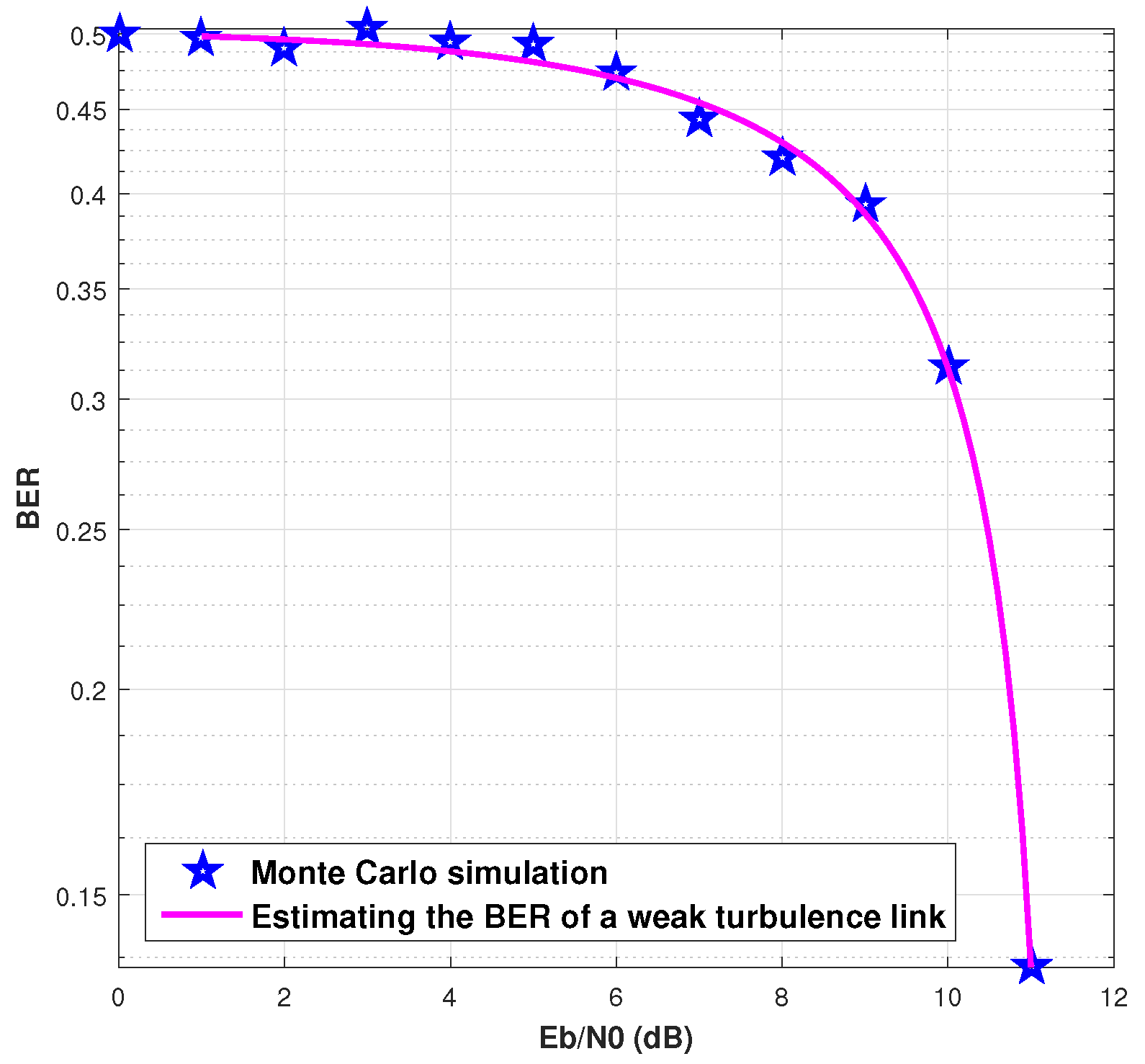
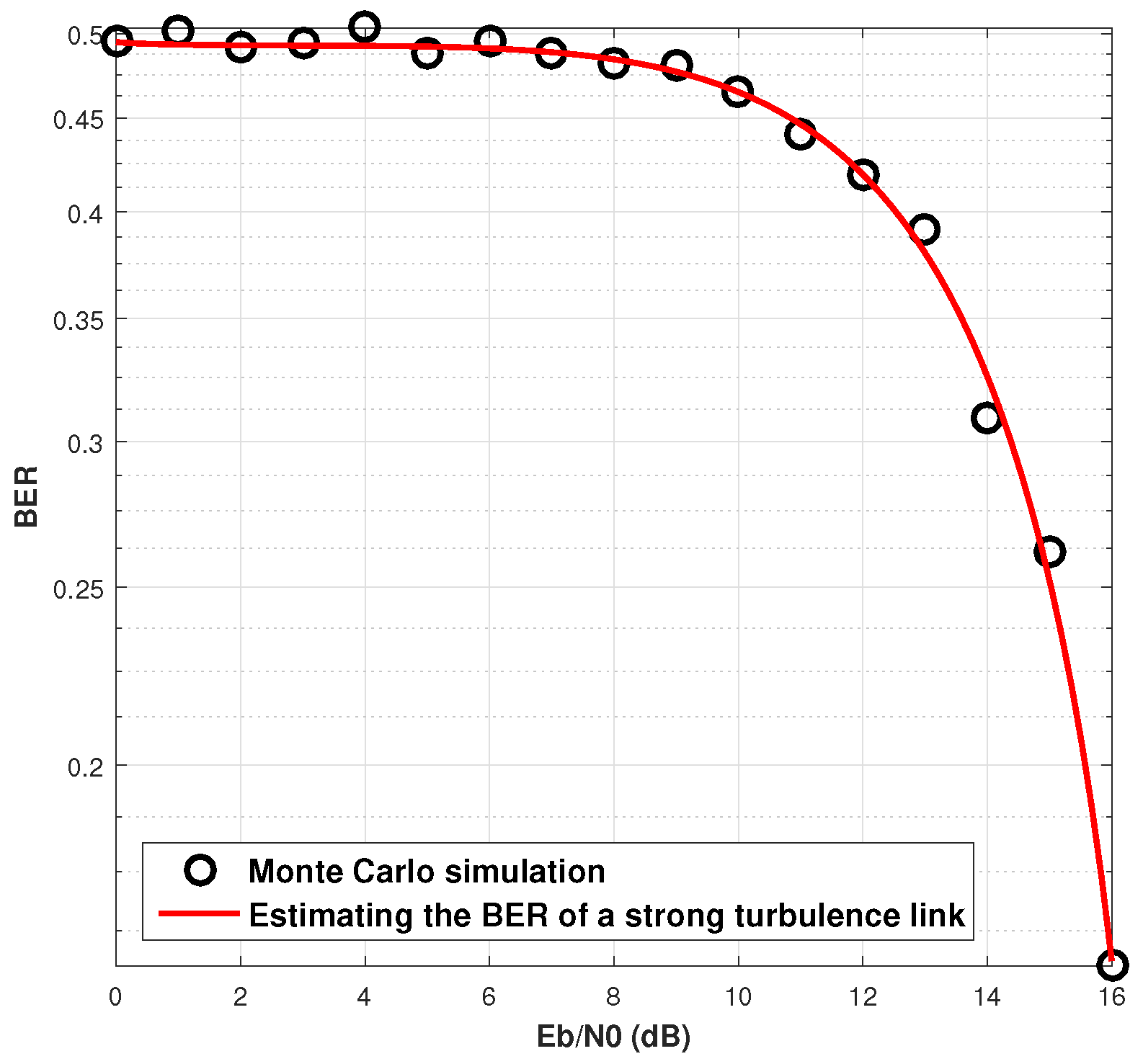
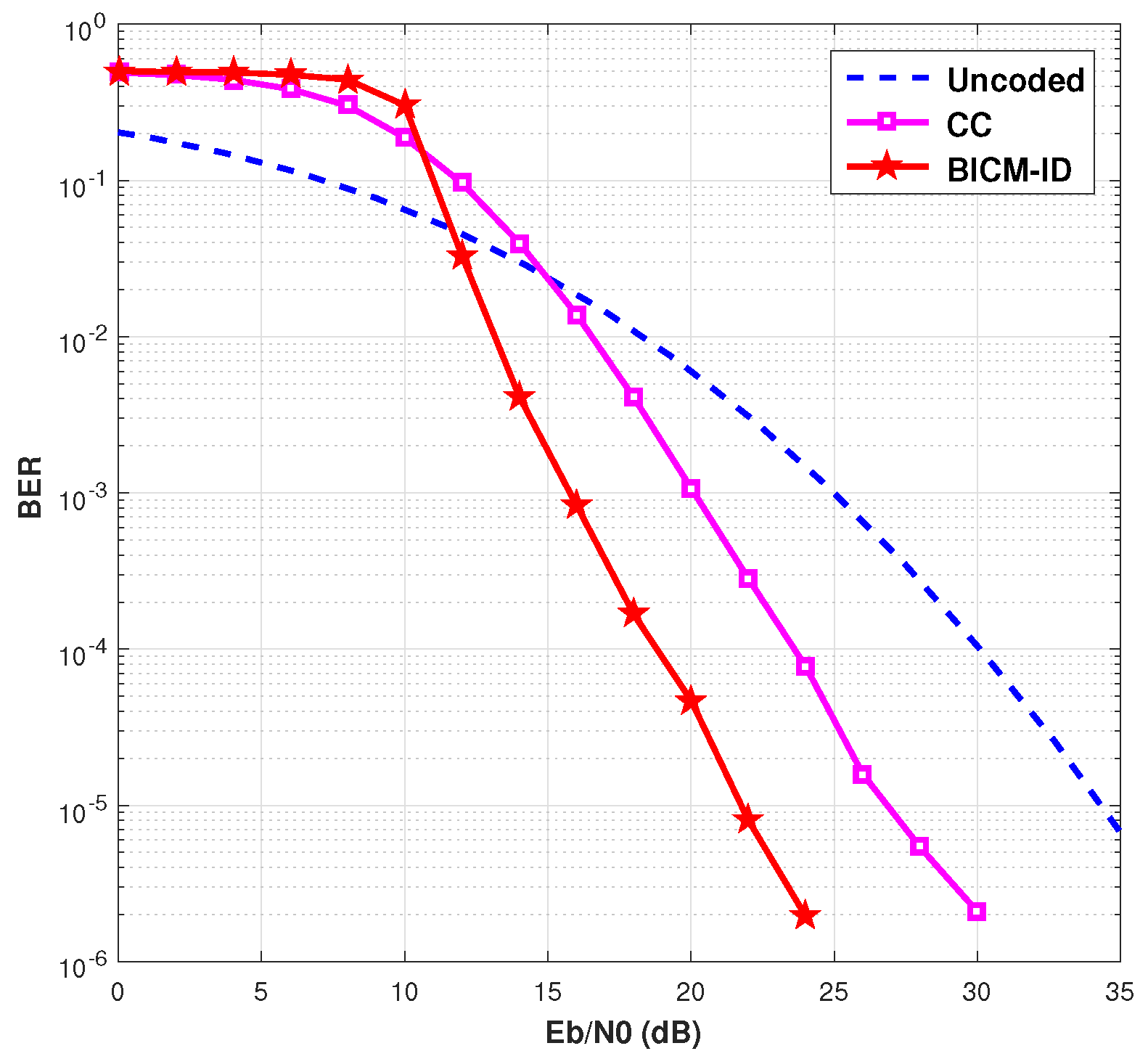

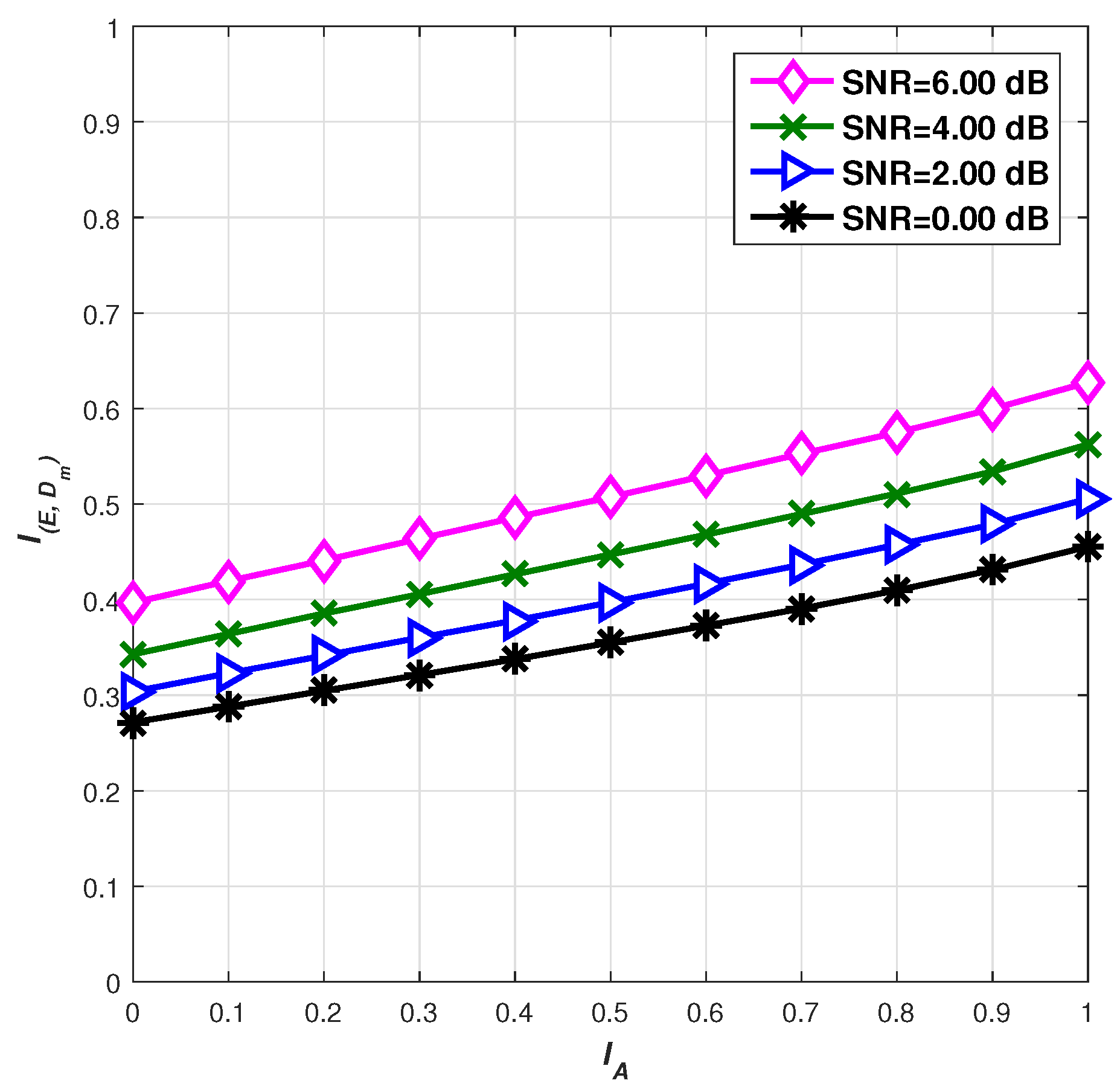
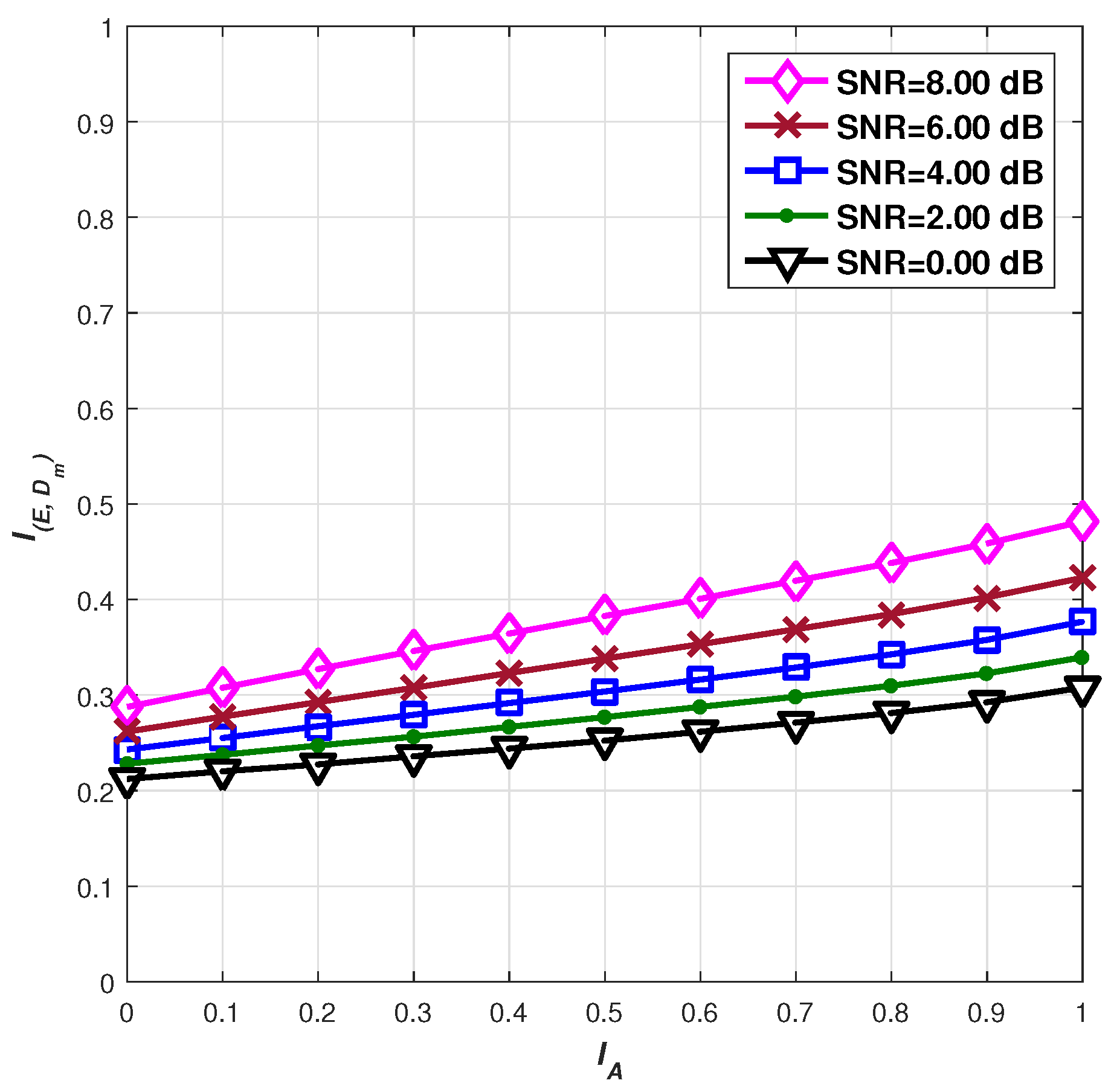
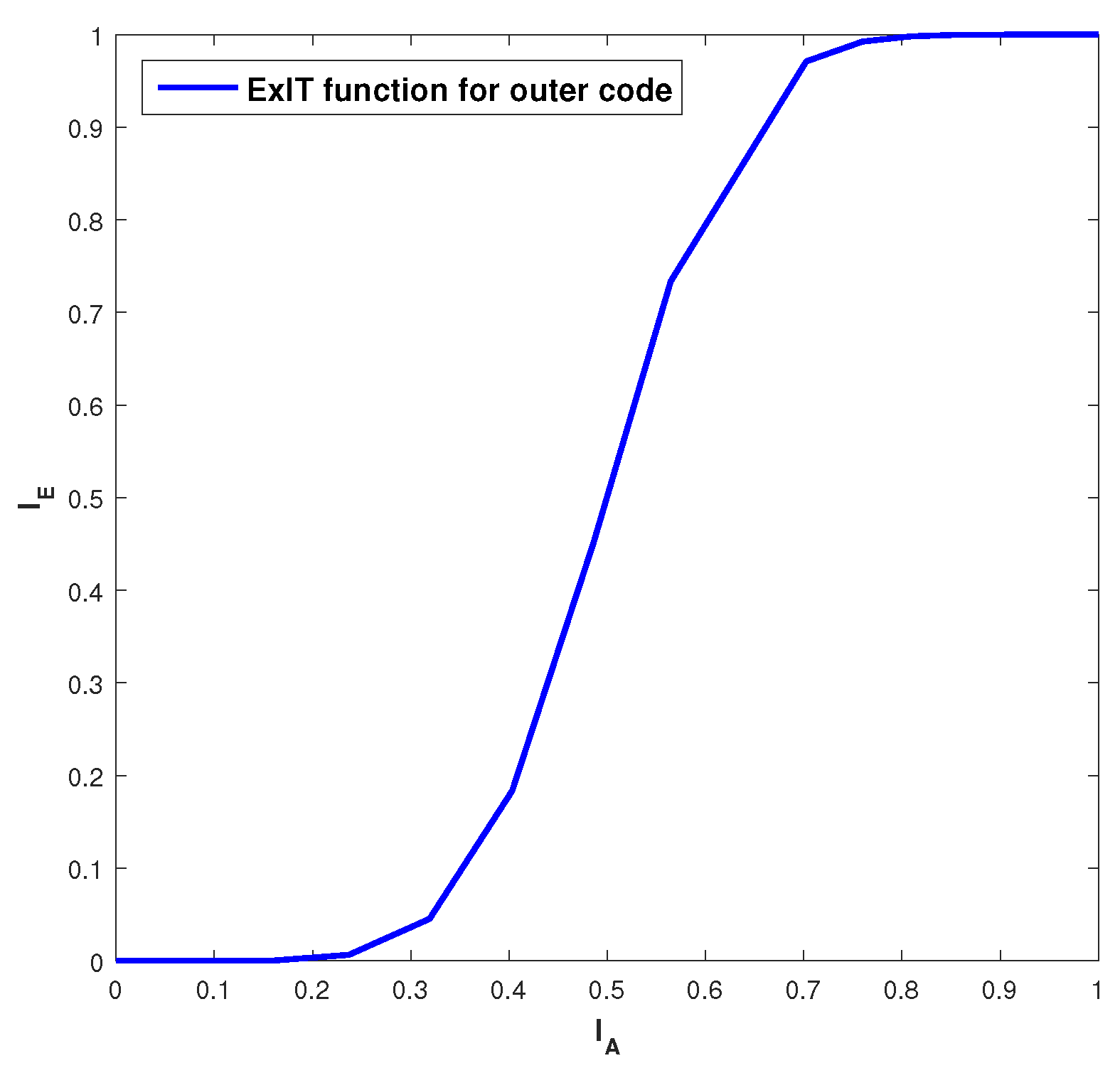
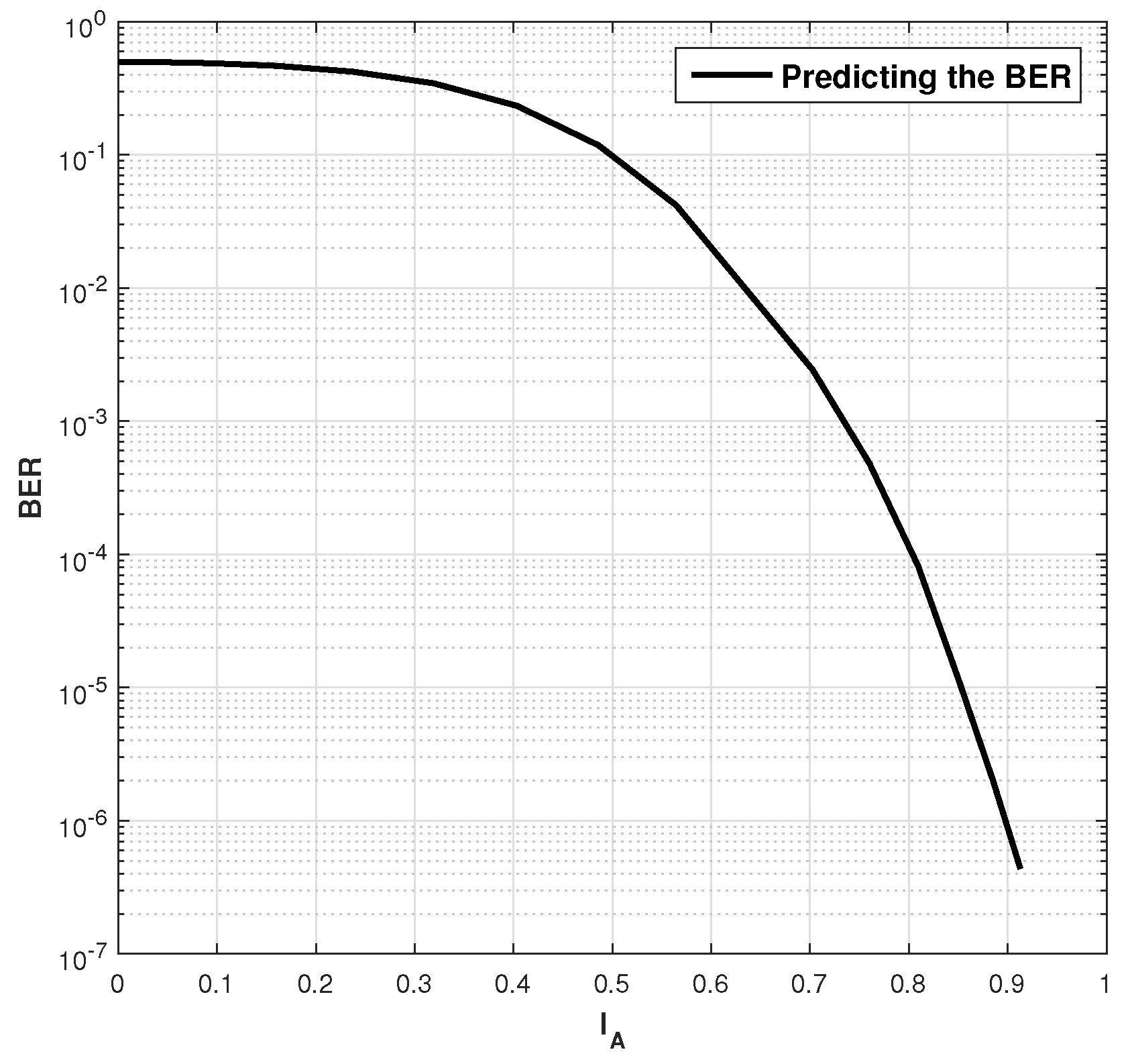
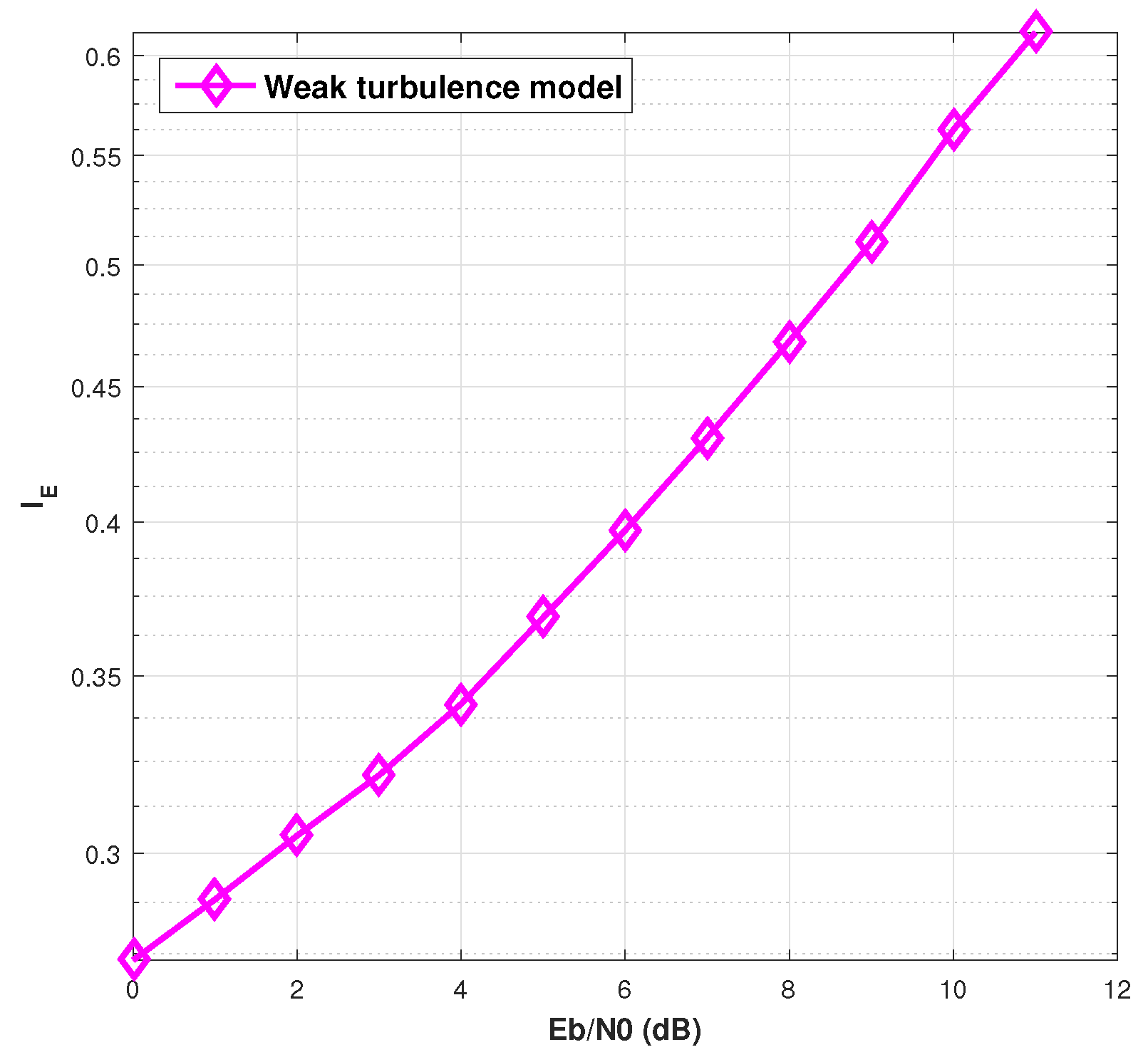
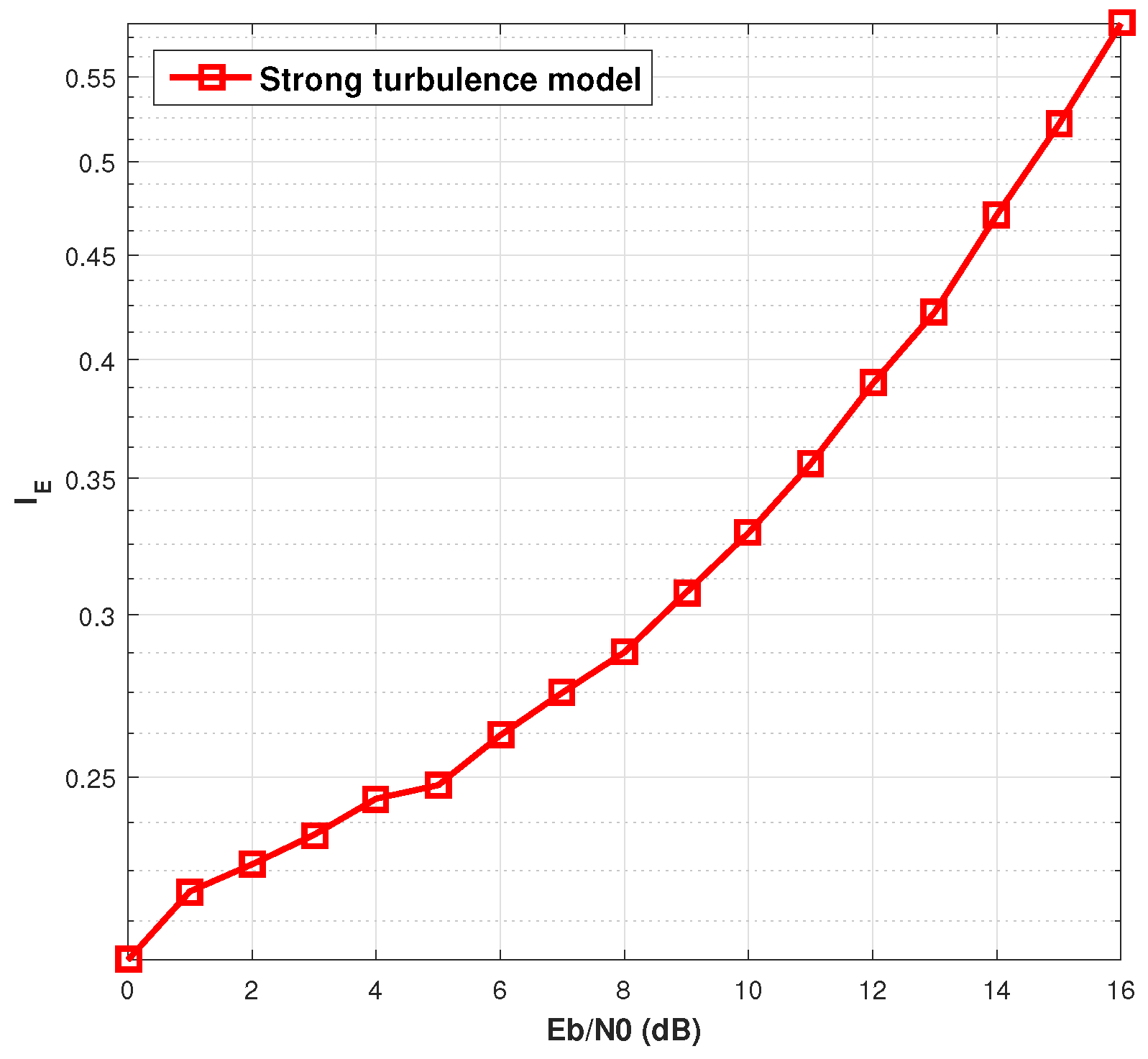
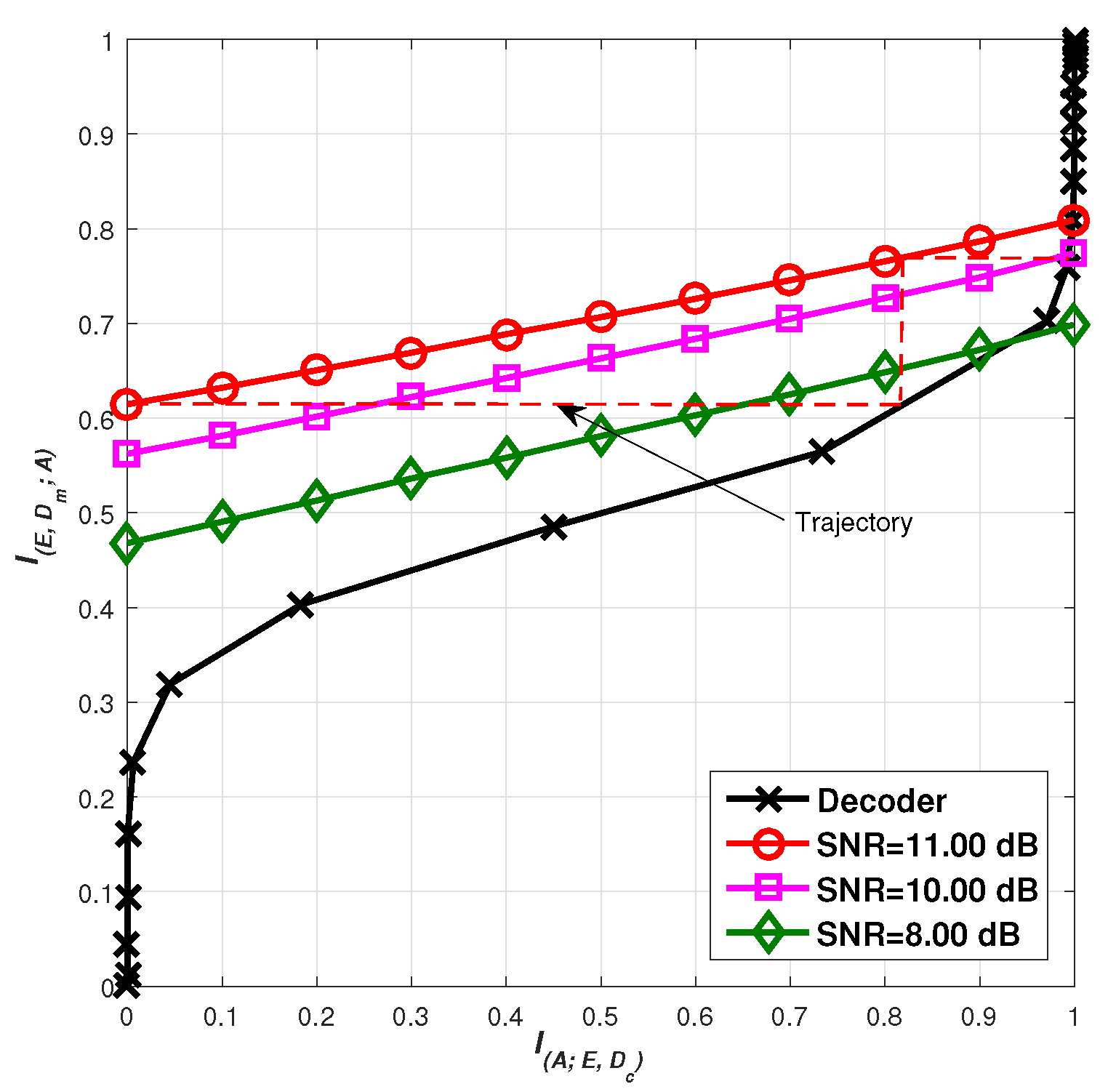
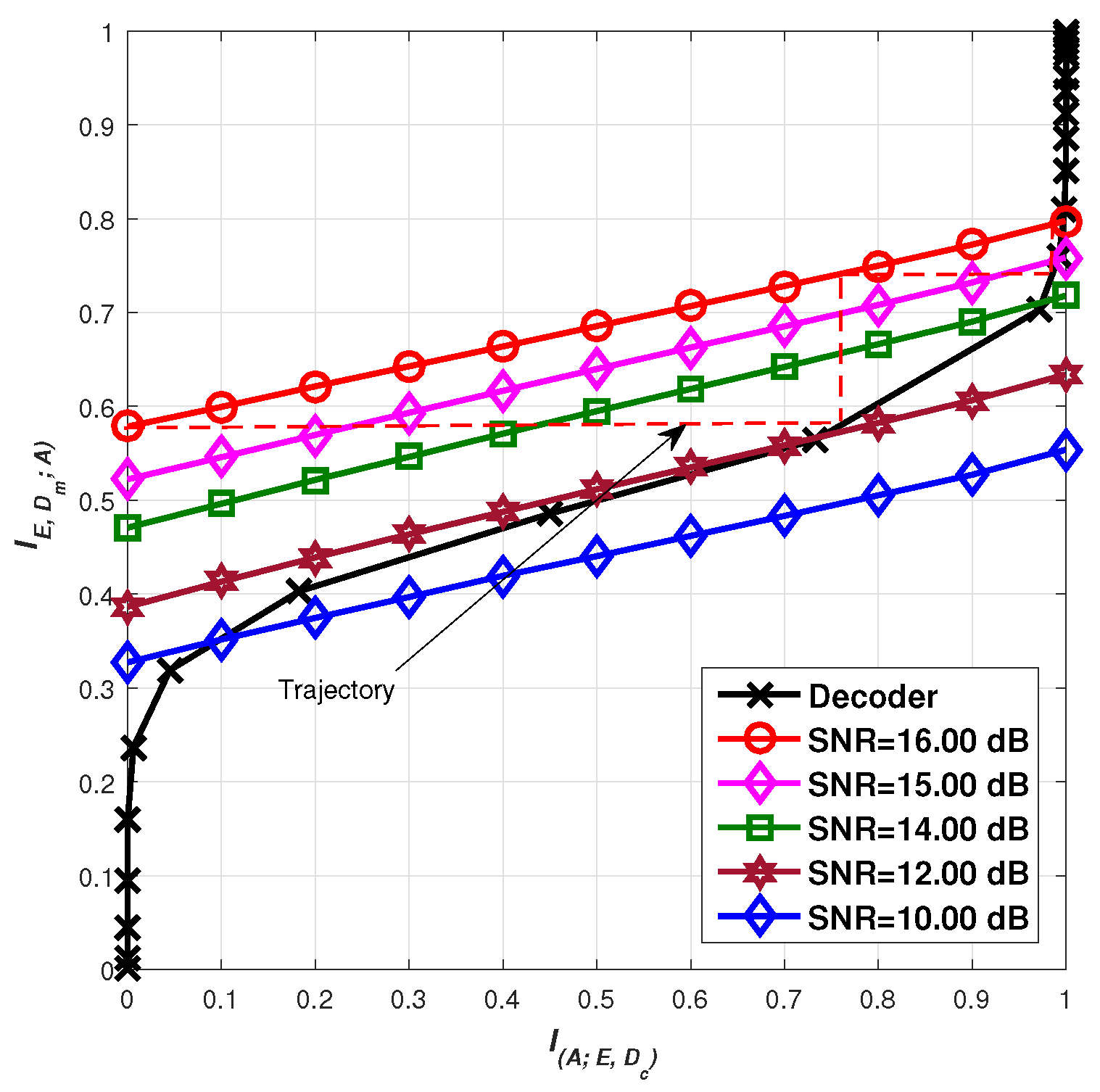
© 2017 by the authors. Licensee MDPI, Basel, Switzerland. This article is an open access article distributed under the terms and conditions of the Creative Commons Attribution (CC BY) license (http://creativecommons.org/licenses/by/4.0/).
Share and Cite
Al-Rubaie, A.A.S.; Abu Almaalie, Z.M.H.; Ghassemlooy, Z. BICM-ID with Physical Layer Network Coding in TWR Free Space Optical Communication Links. Computers 2017, 6, 24. https://doi.org/10.3390/computers6030024
Al-Rubaie AAS, Abu Almaalie ZMH, Ghassemlooy Z. BICM-ID with Physical Layer Network Coding in TWR Free Space Optical Communication Links. Computers. 2017; 6(3):24. https://doi.org/10.3390/computers6030024
Chicago/Turabian StyleAl-Rubaie, Alaa A. Saeed, Zina M. Hassan Abu Almaalie, and Zabih Ghassemlooy. 2017. "BICM-ID with Physical Layer Network Coding in TWR Free Space Optical Communication Links" Computers 6, no. 3: 24. https://doi.org/10.3390/computers6030024



_Ghassemlooy.jpg)

